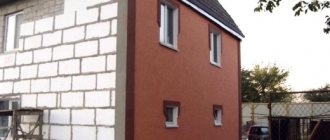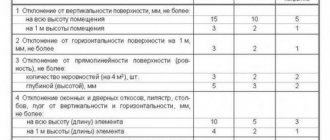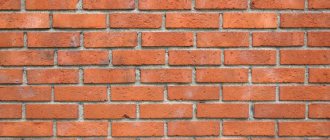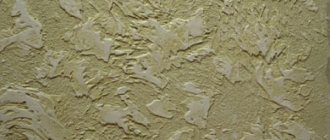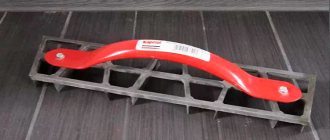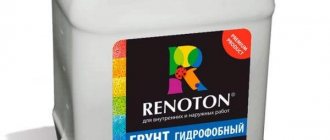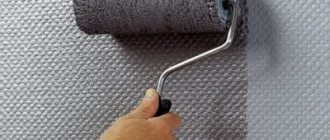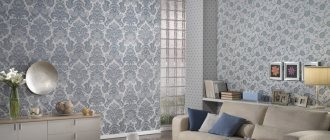Wallpaper
Wallpaper is the most common, commonly used way to decorate walls. For quite a long time, wallpaper in Europe was exclusively made of fabric or leather. Hence the name - they were not glued, but nailed.
Wallpaper today has a diverse range of products to suit all occasions and budgets. Here are paper and textile, vinyl and non-woven, acrylic and fiberglass, wood, cork, metal... Wallpaper in the form of huge photographs and paintings, as well as with 3D images. Moreover, each variety has its own undeniable advantages.
Paper wallpaper
Paper wallpapers are affordable and organic, and an impressive range of colors, textures and patterns opens the way for them to any room. In addition, anyone can handle gluing paper wallpaper, which allows you to save on repairs.
Paper covering is most suitable for the walls of the hallway, living room and bedroom. A variety is glued in the corridor, which, if necessary, can be painted, and the living room is decorated, as a rule, with multi-layered, embossed, primed types of wallpaper. Inexpensive, but “fun” paper wallpaper is also used in the nursery - if the artist in the child awakens, such a finish will be easy to quickly change.
The disadvantages of paper coatings include their fragility and fragility: only the best, multi-layer samples can last 5 years or more without visible loss of quality. And paper does not tolerate moisture well, is highly flammable and fades quite quickly.
Paper wallpaper in the interior, types and design examples
Top ↑
Photo wallpaper
Photo wallpapers became popular in the late 80s of the last century, and have not left homes to this day. This is because their range is truly limitless, the price is not exorbitant, and you can hang such wallpaper yourself. In addition, modern photo wallpapers are highly resistant to fading, repel dust, have an additional protective film and can be produced according to individual orders - for example, with portraits of household members. Actually, these are the advantages of paper photo wallpapers.
The disadvantages include the fact that such wallpaper requires absolutely flat surfaces and, like any paper, is not very durable. The average service life is 3-7 years.
Photo wallpaper in the interior, current options, photos
Top ↑
Fabric wallpaper
Textile wallpapers are linen, felt, silk, velor; on non-woven, paper or synthetic base.
The advantages of fabric upholstery are its naturalness, good thermal insulation, greater resistance to fading compared to paper wallpaper, decent appearance and richness of textures. And also a solid – on average 10 years – service life.
The most environmentally friendly option, paper-based linen upholstery, can be safely recommended for the nursery. Silk wallpaper, as if by magic, will transform an ordinary living room into a chic salon. And felt or velor wallpaper will make the bedroom warmer and more secluded. If more insulation is required, the walls are covered with textile wallpaper on a porous synthetic base: their thickness can reach 5 millimeters. This same variety is least susceptible to deformation. The maximum period of use of such coating is up to 10 years.
Negative qualities of fabric wallpaper: the need for regular cleaning, instability to mechanical stress, relatively high price. In addition, fabric wallpaper requires perfectly flat surfaces, as well as knowledge of the nuances of application to walls.
Textile wallpaper in the interior, advantages and disadvantages, photos
Top ↑
Jute wallpaper
Jute wallpaper belongs to a wide family of design materials with natural plant coverings. They are also called wallpaper mats. They can be based on either paper or non-woven fabric.
Jute wallpaper is valued for its 100% naturalness, breathability, resistance to ultraviolet radiation and mechanical stress. And the characteristic, knotty structure elevates these wallpapers from the category of ordinary coatings to the rank of stylish designer features. Most often, jute is used when they want to emphasize the minimalism, eco or ethnic character of the interior. This type of wallpaper is used primarily for living rooms and bedrooms; However, the safety and hypoallergenic nature of jute makes it a welcome “guest” in children’s rooms.
The disadvantages of jute coverings include their ability to absorb odors (which is why you rarely see jute in kitchens), the need for regular cleaning and a considerable price. The average service life is 10-15 years.
Top ↑
Vinyl wallpapers
Vinyl wallpaper is on the crest of popularity today. Of course, this type of finishing can imitate stone, wood, plaster or, say, suede. It should be noted that vinyl wallpapers are also divided into a considerable number of subtypes: structural, with relief and a layer of foamed vinyl, with hot stamping and silk-screen printing effect.
The strengths of this coating include a high degree of sound insulation, the ability to mask small irregularities and roughness on the walls, and resistance to fading and moisture. Due to the fact that vinyl wallpapers are not afraid of water and steam, they are relevant in kitchens and bathrooms.
But vinyl wallpaper also has its drawbacks: airtightness, difficulty in gluing it yourself, relatively high cost, and also a not very pleasant smell that cheap samples can emit. Service life is on average 20 years.
Top ↑
Non-woven wallpaper
Non-woven wallpaper can be used for paper, fabric or vinyl wallpapers. These are rolls of cellulose fibers bonded with polymers. Their advantages are environmental friendliness, breathability, a wide palette of patterns, and also the ability to repaint these wallpapers and use them to smooth out small bumps and blemishes on the walls. The service life of non-woven wallpaper is about 10 years.
And now about the shortcomings. Firstly, not everyone can afford high-quality non-woven wallpaper. Secondly, dust accumulates in the “folds” of their embossing. They are also quite easy to damage, for example, when rearranging furniture. Finally, the non-woven covering must be glued to exemplarily clean, plain walls. Otherwise, stains and stains may be visible.
Top ↑
Acrylic wallpaper
It is believed that this is an analogue of vinyl coatings, which are based on paper, and foamed vinyl replaces polymer coating. Advantages: hypoallergenic, durable, practical, moisture-resistant, which allows you to use wallpaper in the living room, kitchen, and even the bathroom. And also resistance to mechanical stress and ease of handling. It is not surprising that acrylic wallpaper is preferred by families with playful children or pets.
Disadvantages: such wallpapers are inferior to their vinyl “brothers” in thickness and, therefore, in durability. And their color range is not so diverse. Application period is 10-12 years.
Top ↑
Glass wallpaper
This still non-trivial type of finishing is gaining more and more points - thin, glass yarn rolled into rolls. It consists of dolomite, sand and similar additives, so naturalness and harmlessness are one of the “trump cards” of glass wallpaper.
There are other advantages: high strength, resistance to chemical and mechanical influences, fire and moisture, and the possibility of painting. Fiberglass fabric is so presentable that it often adorns the walls of posh bars and restaurants. Nothing prevents the use of glass wallpaper in any room, but they look especially impressive in classic as well as modern living rooms.
The disadvantages include the complexity of installation and, especially, dismantling, and the requirement for an absolutely flat wall surface. In addition, glass wallpaper, due to the complex production technology, is an expensive pleasure. But the service life of the glass coating is up to 30 years.
Top ↑
Cork wallpaper
The raw material for their production is Mediterranean oak bark with its unique resinous substances. The advantages of the material are obvious: environmental friendliness, bactericidal properties, creation of a special, healing microclimate. Cork also has enviable insulating properties. If someone in an apartment, for example, plays music, the neighbors are unlikely to hear, because the traffic jam will absorb the decibels. It is also important that, unlike wooden coverings, cork does not ignite and does not support combustion. After all, the velvety nature of cork bark is pleasant to the touch, which is why it is used in rooms for very young children.
Among the disadvantages of cork wallpaper, mention should be made of a relatively narrow range of colors. It cannot be said that their patterns are monotonous, but their natural color is in the range of natural wood - from light yellow to dark brown. And it is also worth considering that they will not be cheap, although the high cost in this case is compensated by a rather long service life. Service life – up to 30 years.
Top ↑
Linkrust
It may seem that we are talking about a new product, but this material was invented back in 1877. These are rolls that are formed from wood flour mixed with wax, rosin, and linseed oil. The surface of the linkcrust is embossed and patterned, which gives the finish an expensive, respectable look.
The best qualities of linkrust are environmental safety, commendable thermal stability, durability, resistance to deformation, a wide selection of colors and shades, the ability to paint, and ease of maintenance. The shelf life of linkrust wallpaper is practically unlimited, which can be confirmed by the perfectly preserved interiors of many ancient houses.
Linkrust looks great in a classic, Victorian setting. However, it is also characterized by certain defects - for example, instability at low temperatures, a complex installation process, and high cost.
Magnificent wallpaper: linkrust in the interior, photo
Top ↑
Metallized wallpaper
Metallic/metallic wallpaper can be embossed, blackened, etched, painted, patinated... Thanks to its decorative variety, this type of wall covering is a signature technique of many famous designers.
Wallpaper covered with a layer of foil, namely they are called metal, is resistant to moisture, wear, and has good thermal insulation. Well, if they are of the mirror type, then they also have the ability to visually “spread” the space.
Metallic wallpaper in a noble shade is adored by fans of expensive, pretentious styles such as Empire, Art Deco and Art Nouveau. Designers especially recommend this wallpaper for decorating halls, lobbies and halls.
The disadvantages of this coating are air tightness and low resistance to mechanical stress. Metallic wallpaper also requires perfectly smooth walls... and considerable investment. Their shelf life is on average 10 years.
Top ↑
Liquid wallpaper
Liquid wallpaper, also known as flock and silk plaster. Despite the natural base, after hardening on the walls, this coating bears little resemblance to wallpaper. The advantages of liquid wallpaper are practicality, damaged fragments are easy to restore, environmental friendliness, the ability to allow air to pass through, and sufficient strength.
The disadvantages are the relatively high cost, as well as not such a wide selection of patterns and colors as is the case with conventional paper ones.
Liquid wallpaper is suitable for the hallway, hall, nursery, bedroom and living room. Average service life is 6-8 years.
Liquid wallpaper in the interior, design options, photos and videos
Top ↑
Rough interior finishing
The following types of interior decoration are distinguished:
- Chernovaya. Craftsmen prepare indoor surfaces for applying finishing materials. Usually, during rough finishing, the base is strengthened, defects are eliminated and surfaces are leveled using various methods.
- Finishing. Finishing/decorative materials are applied to the previously prepared surface.
Let's dwell on the general rules of rough finishing.
Rough interior finishing of premises usually involves work on leveling floors and walls in various ways. In accordance with SP 29.13330.2010 and SP 71.13330.2011, the subfloor is installed on a permanent foundation using multilayer technology.
If the floor is laid on a foundation made of soil (this is often done by owners of private houses), then the soil must be stabilized and secured to avoid subsidence and heaving. At this stage, drainage work is also carried out.
Note! Work on compacting the soil base is carried out in accordance with SP 71.13330.2011, which describes the requirements for earthen structures.
Floors should only be installed at the appropriate temperature. The minimum air temperature for backfilling sand, gravel or other excavation work is 0 0C. At +5 0C, bitumen compounds are applied and cement mortars are poured. Polymer compositions are used at +15 0C.
The air humidity level in the room should not be higher than 60%. In addition, before you begin arranging the floor, it is better to complete the plaster and putty work, which is accompanied by an increase in humidity.
An underlying layer of sand, gravel, slag or similar materials is laid on the soil base. As for the thickness of the underlying layer, it is determined by the expected load, but should not be less than 60 mm if it is sand, and 80 mm if it is larger bedding.
If necessary, as part of the interior decoration of the premises, waterproofing of the floor is carried out - a series of measures to protect the screed and floor covering from contact with moisture. In this case, waterproofing materials such as bitumen-based mastics, polymeric materials for painting, as well as PVC film and membrane with similar characteristics are used.
During interior finishing, the floor is leveled, pipelines and other communications are masked, the load is evenly distributed on the load-bearing elements and other types of work are carried out. In all of these cases, craftsmen use screeds. The most common type is poured screeds made of mortar, which includes cement and sand (with or without reinforcement).
The minimum thickness of the screed for floor slabs is 20 mm, and for the backfill layer (as well as for bulk sound and heat insulating materials) – 40 mm. When pouring over pipes, the screed must be at least 10-15 mm thicker than the diameter of the pipeline.
Instead of screeds made of cement-sand mortar, it is allowed to use prefabricated structures made of plywood, fiberboards and similar materials. When installing such a coating, its elements are fixed to the base using adhesive solutions or mechanical fastenings.
Before final finishing, craftsmen plaster the walls and ceilings. In this regard, SP 71.13330.2011 states the following rule.
Walls on which finishing is provided must have a strength of at least 65% of the design value.
To repair all cracks, cracks and other defects, it is necessary to use special solutions.
Concrete surfaces are scored to ensure adhesion. Surfaces made of bricks and blocks must be processed without notching, but the seams must be filled with a special compound.
When plastering, a multilayer method is used. In this case, the thickness of each layer must correspond to the value specified in this table:
Applying each subsequent layer of plaster is permissible only after the previous one has dried.
Nothing is said about how to level the plaster, but it is best to do it along the beacons. To do this, beacon profiles are pre-installed on the base, serving as a support when distributing the plaster and removing its excess.
Instead of plastering, as part of the interior decoration of premises, cladding or sheathing is made of plasterboard sheets. The sheets are attached directly to the base using an adhesive mass, using a special metal frame or wooden beam.
By installing the sheathing on the frame, you can lay hidden wiring without compromising the integrity of the wall. Of course, to ensure safety, all wires must be laid in cable ducts made of non-flammable material. If the building is made of concrete or brick, you can use plastic corrugations. If the building is wooden, a metal hose or steel pipes are used.
Often, after finishing plastering work or installing plasterboard boards, the surface needs to be puttied. In these cases, a thin layer of a special composition is applied to the walls (usually based on gypsum), after which it is leveled, waited until it dries, and then sanded with abrasive materials.
Decorative plaster
This general term refers to a layer of construction and decorative mixture applied to the surface of the walls. It levels the walls, insulates them, insulates them, and is also, of course, one of the most ancient methods of beautifying a home inside and out.
Plaster mixtures can be divided according to two criteria - according to the composition of the mixture and according to artistic qualities.
Mineral plaster
Mineral plaster is the most economical type of plaster. This is due to the base of the mixture – cement, which is “seasoned” with chemical additives that impart increased moisture resistance. To this we can add environmental safety, vapor permeability, resistance to fungi and mold, temperature changes, as well as fire safety.
Among the disadvantages are the not very diverse color palette and the complexity of application. But the average period of operation of a mineral coating does not exceed 15 years.
In addition to mineral, there is also: silicate, based on liquid glass; silicone, which is based on silicone resins; polymer - with acrylic resin in the composition. Silicone and mineral plasters have the longest service life.
Top ↑
Textured plaster
[ads_block] Textured (structural) decorative plaster is a way of decorating walls that can be called an unfading classic. Due to the fact that the plaster mixture contains various additives (pebbles, fibers, marble chips or ground bricks), this finish can look like rock, valuable wood, cork bark, sand patterns, cracked clay, dug velvet.
Textured types of plaster include the famous “fur coat”, as well as bark beetle plaster, a method of finishing halls and hallways that has been popular for many decades.
Textured plaster is an excellent solution for those who want to get a unique interior. It will definitely provide picturesqueness and sophistication. And at the same time, strength, durability, and fire resistance. Plaster will help hide small defects on the walls, and its price is not bad at all. Textured plaster will not put to shame any of the palace, classical interior styles; it will be a good find for the hall, living room, and dining room.
Judging by the reviews, this design has one drawback - it is difficult to remove when the need for new repairs arises. The time during which textured plaster will not lose its attractiveness is 15-20 years.
Top ↑
Venetian plaster
It's hard to believe that this type of coating is over 500 years old. “Venetian” creates the impression of a noble stone - marble, granite, onyx, jasper, opal, malachite, amber. Such a sophisticated type of decoration literally asks for the walls of spacious living rooms, where there are fireplaces, hanging canvases in lush frames and the spirit of the Renaissance is in the air. Venetian plaster is unique: there are no two identical copies of it in the world! It is precisely this that can be seen inside the palaces of the Venetian doges and the villas of Italian aristocrats. “Venetian” is not only enchantingly beautiful, but also safe, moisture-resistant, durable and capable of pleasing the eye not for years, but for centuries! But the price also matches it.
Top ↑
How and what kind of plaster can be used in kitchens?
By making a revolution in the kitchen and bathroom, refusing to glue wallpaper for painting and ceramic tiles, you will make them super fashionable, stylish and unique. This room is considered to have an extreme climate in the house, so for the kitchen it is advisable to choose acrylic-based synthetic compositions. Only they are able to withstand temperature changes, are resistant to the formation of fungal formations, and allow air to pass through well.
Advice: It is advisable to cover the top layer with wax or paint, this way it will last longer without losing its appearance and will make caring for the coating easier.
In the interior of the kitchen
Look at the photo to see how your kitchen or bath can be transformed if you choose decorative plaster as a finish.
And it doesn’t matter what it will be:
- Venetian silk;
- bark beetle;
- velvet, classic travertino;
- marble;
- microcement.
Gypsum mixtures cannot be used as a base for these rooms. They are afraid of high humidity and do not meet hygienic requirements. Because they actively absorb moisture, they swell, losing their integrity. In order not to have to redo the repairs, and in the near future, you simply need to abandon them.
Venetian decorative plaster is especially popular in kitchen decoration.
It is used to create styles such as:
- Mauritanian;
- high tech;
- country;
- vintage;
- retro.
Here they use discreet smooth textures.
- The Venetian looks good in combination with an exquisite panel and a white set. The coating can be applied to all four walls or to individually selected sections.
- An option where the ceiling surface in the kitchen will not be flat, but textured, and the walls will be smooth, one-color or two colors, will look creative. Here the color of the headset is selected according to personal preferences. You can even recreate imitation clouds or painting motifs on the ceilings.
- It would be interesting to look at the option where such a coating separates the working area from the dining area.
- The combination of a decorative brick-like coating with a smooth surface also looks original. Such a kitchen will look impressive and stylish.
- The photo shows what a combination of artificial stone and bark beetle looks like in a small kitchen. You can choose any colors, not just those used for the example.
- Concrete plaster is often used in kitchens. It looks quite decent and original. In the apron area, you can use transparent or mirror wall panels. They will not spoil the overall appearance and will serve as reliable protection for the coating.
- You can leave the same color as concrete. True, strokes of different shades will look even better on deep gray, for example, black, white or strokes of whitish hairs, with shades of rust or a metallic sheen.
There are a lot of options for using textured coatings. They can be used to decorate only arches, niches, ledges or all walls along with these architectural elements. You can make them plain or combine colors.
Little tricks in kitchen design
I hope these tips will help you in decorating your kitchen space:
- If the kitchen has niches, ventilation ducts, or openings, decorate them with patterned plaster.
- If you have a fireplace or stove in your house, cover them with brick or natural stone plaster; in addition to an aesthetic and fashionable appearance, you will achieve another effect - under such a coating the chips and cracks on them will be hidden.
- If you want to make a kitchen in a maximalist style, use a smooth wall covering.
- If your kitchen is light and spacious, and the furniture set is exclusive, use Venetian plaster in your work.
There are many options for using coatings
The apron is especially susceptible to temperature changes, so it can be covered with ceramic tiles. Cover the dining area with decorative plaster as much as possible, this will add comfort.
Technology of Table Setting for Dinner – Taking care of family and friends (225+ Photos)
Dye
The market offers a truly huge number of all kinds of interior paints. Water-based ones are considered the safest and non-toxic, while organic-based ones, when dry, form a denser, shiny layer. You can choose moisture-resistant paint, which is suitable for the kitchen, and vapor-permeable paint, which would be appropriate, for example, in the hallway.
As for decorative properties, paints come in glossy, matte and even embossed. The former are suitable for perfectly smooth surfaces, while the embossed one can hide roughness and small errors on the walls.
- Water-based paints have the “softest” chemical composition. Their other advantages include an attractive price and a huge selection of colors and shades. Disadvantages include instability to abrasion and high humidity.
- Acrylic paints are more tolerant of fumes, but drops or streams can destroy them. The most durable among water-soluble paints are latex paints. They can even be washed, but they are not very tolerant of ultraviolet radiation, and they are more expensive. Walls coated with acrylic-based paint are not afraid of sunlight, are non-toxic and do not fade for 15-20 years. The disadvantage of such paints is their long drying time.
- Alkyd paints are inexpensive, easy to use, have a wide range of colors and dry within an hour after application. True, alkyd-based dyes are short-lived - a year later, the walls may become stained and lose their original brightness. They also do not like sunlight, and most importantly, they are quite toxic. In connection with the last point, these paints are not recommended for bedrooms and children's rooms.
- Silicate paints are created on the basis of liquid glass with the addition of pigments and fillers. Most often they are used on verandas, balconies, and basements - where resistance to moisture and temperature changes is required.
- Silicone paints are vapor-permeable, have dirt-repellent properties, are not afraid of water and create a fairly durable coating layer. It is not surprising that their service life is a quarter of a century. Silicone paints can be used to decorate bathroom walls, use them in the hallway, and in the kitchen. It should, however, be remembered that the bumps and depressions on walls covered with this relatively new type of paint and varnish products will become more noticeable.
- Oil paints with drying oil as a base are rarely used today for interior decoration. The reason is the harmful components that are used in their production. In addition, oil compositions take a long time to dry, do not allow surfaces to “breathe”, and can bubble and crack. The merits of oil paints include, perhaps, their affordability. Because of this, oil paints can be useful in utility rooms and utility rooms - they are used to paint pipes, window frames, and heating radiators.
- Enamel is often called upon to help when renovations are underway. Among the advantages of enamel dyes are a budget price, aesthetics (it forms a smooth, glossy film), and durability that exceeds the durability of oil and alkyd paints. Enamel is called a universal coating because it easily applies to any surface, be it brick, concrete or wood, and dries within 24 hours. Paint resists moisture well, which is why bathroom walls are sometimes covered with enamel. But we must not forget that enamels are fire hazardous, which is why they should not be used near a stove. The durability of enamel paint depends on the type and ranges from 10 to 15 years.
Top ↑
The need for compliance
Many people believe that the requirements for interior decoration of premises, which are regulated by various regulations, in particular SNiP, can be completely ignored. In reality, this is a wrong position that can lead to many undesirable consequences:
- Injury. If someone is injured due to a violation of the rules, liability may vary, including criminal liability. The damage caused by incorrect wallpapering or painting is insignificant, but the situation is different with large-scale rough finishing work. Replacing wooden floors or pouring screeds requires careful consideration for compliance, especially for apartment buildings.
When decorating yourself, following safety rules is especially important.On a note! Some regions have their own rules and regulations with a precise list of work that requires prior approval. Thus, pouring screed is often an activity that necessarily requires permission.
- Poor quality result. The recommendations are drawn up in such a way that the result is a reliable and durable surface. This is especially true when work is carried out with the help of external specialists and organizations.
- Hazard to human health. Correct execution of interior work and the use of suitable materials is the key to the complete safety of residents and others.
The most commonly used standards are SNiP 3.04.01-87; SNiP 2.03.13-88 and SNiP 3.05.01-85. They give an idea of the finishing activities inside the premises. Due to the emergence of new materials and technologies that are not reflected in existing documents, you should study the instructions more carefully, as well as be guided by the regulatory framework of other countries. This is especially true for construction products, which must meet certain safety requirements.
Compliance with building codes and regulations (SNiP) is the key to safety and quality work performance
Decorative rock
Decorative brick/stone. Today, few people will be surprised by this method of decorating living rooms and bedrooms, although recently brickwork was not allowed beyond the hallways. It's all about fashion. It turned out that brick as a method of decoration organically combines with many current styles - from classic and rustic to minimalism and loft.
Rigid tiles that imitate brick are based on gypsum, cement, clay and other compounds. So, white gypsum tiles are the most affordable. It is quite light in weight; for its laying you need to purchase special glue.
The main disadvantage of this material is its high moisture absorption - this should be taken into account when planning repairs and should not be used in rooms with high humidity. The average service life is at least 15 years.
In addition to brick, walls can be covered with decorative artificial stone, which imitates sandstone, shell rock, slate, tuff, basalt, etc. Despite the variety of textures, decorative stone is produced mainly from gypsum, sand, clay, cement and corresponding dyes.
The advantages of this finishing option are diversity, which allows the wildest design fantasies to run wild. Artificial stone is quite easy to install, it is hygienic, and lightweight, which can also be considered an advantage.
Decorative stone is most often used to highlight corners, openings, arches, frame a fireplace, in other words, to create stylish accents. Service life if treated with care is up to 30 years.
Decorative stone in the interior: design options, photos
Top ↑
Types depending on the base
In the past, when plastering work was required, there was no need to think about the choice of mortar, since cement-sand or cement-lime combinations were the only available options.
Now, a homeowner who has started a renovation is faced with an abundance of materials that differ from each other in their characteristics.
Cement
This type is a cement-sand or cement-lime mixture, made according to certain proportions with the addition of water.
The cement-lime composition is well suited for finishing walls in rooms with high humidity, which allows it to be used for plastering kitchens and bathrooms.
Cement-sand plaster serves as a composition for leveling walls and bringing surfaces to zero.
Advantages:
- Strength. In this indicator, cement compositions are significantly superior to other materials, forming a reliable coating on the surface of the walls.
- High adhesion. The features of the components included in the cement mortar ensure high-quality adhesion of the plaster to the surface, which makes the use of a primer for pre-treatment unnecessary.
- Price. The materials used to make the solution are affordable and accessible.
Flaws:
- The use of mortar requires accurate calculation of the load on the wall and the thickness of the coating, since cement plaster has a significant mass.
- Plastering is a labor-intensive process that includes several mandatory steps.
- The composition hardens for a long time - about 3-4 weeks.
Plaster
From the name it is clear that the main component of the composition is gypsum, to which light fillers are added to reduce material consumption.
As well as high-quality modifying additives designed to increase the adhesion of the solution.
Used for application under subsequent decorative finishing using paint or wallpaper.
Advantages:
- No shrinkage. This property allows you to obtain a perfectly flat surface, without the formation of cracks on it during the solidification of the solution.
- Elastic. Due to the good viscosity of gypsum mixtures, thicker layers can be applied to the surface if necessary. In this case, the solution will not deform or drain.
- Vapor permeability. When the composition applied to the surface hardens, it forms a porous structure that allows the walls to “breathe”, which protects them from the formation of mold even with increasing humidity.
- Environmentally friendly. In this regard, gypsum plaster is superior to cement mortars.
Flaws:
- The material is not suitable for finishing rooms with constantly high humidity.
- Lower strength in contrast to cement composition.
- Gypsum coating negatively affects metal objects - nails, screws and other metal fasteners located in the thickness of the plaster quickly rust and become unusable.
Polymer
This material is not intended for rough leveling of surfaces, but is used exclusively as a decorative coating.
It is made on the basis of polymer resins and other synthetic substances. Ready-made plaster can be colored (contains colored granules) or plain (mostly white).
Advantages:
- Dries quickly and evenly, resulting in a flat and smooth surface.
- Does not require additional finishing.
- Resistant to moisture.
- Has many options for relief finishing.
- Frost-resistant.
The disadvantages include the high cost of the material.
Silicone
The main component of the material is silicone resin, which is mixed with various fillers (fabric fibers, minerals).
Components are also added to the composition to improve the strength of the coating and make it resistant to ultraviolet radiation and temperature changes.
Used for decorative purposes to treat almost any surface, including wood.
Advantages:
- High elasticity.
- Absolute water resistance.
- Durability of the coating (more than 25 years).
- High-quality adhesion.
- Good vapor permeability.
Flaws:
- High price.
- The surface needs to be treated with silicone primers before plastering.
Ceramic tile
This finishing material can be called eternal: trends change, but bathrooms and kitchens are still decorated with tiles. Ceramic tiles have earned trust due to such qualities as environmental safety, moisture resistance, hygiene and unpretentiousness in everyday life, immunity to fungi and bacteria, abrasion and fading. And the variety of formats, colors and textures, copying the appearance of noble stones, minerals, crocodile skin and much more, gives tiles a pass into any room. High-quality ceramic facing material can serve for 50 years or more. The only thing that is required is to restore the seams between the slabs.
Top ↑
Porcelain tiles
Porcelain tiles are characterized by strength, greater than that of tiles, environmental friendliness, low degree of water absorption, resistance to chipping, and resistance to low temperatures. The last point makes porcelain stoneware the leader in finishing when it comes to balconies, terraces, loggias and verandas.
As for the range of colors and textures of porcelain tiles, it will satisfy any tastes and whims. Porcelain tiles will last for more than one generation. The disadvantages of this coating include its impressive weight and relatively high cost.
Top ↑
Popularity of glass wallpaper
If you are wondering what is the best way to decorate walls in 2021, then it is worth noting that every year various “breathable” materials that are environmentally friendly are becoming more and more in demand.
They have a huge number of different advantages, but it is especially worth noting the fact that they do not burn, and during melting they do not emit absolutely any substances harmful to humans. In addition, this is a moisture-resistant option, so it can be used in the kitchen and bathroom without unnecessary analysis.
PVC panels
Finishing with PVC panels will cost 30-40% less than with ceramic tiles. In addition to being cheap, PVC panels are practical, easy to use, and insensitive to temperature changes. Installation of the panels is also quite simple. Contrary to rumors, PVC does not emit toxic substances and is considered a safe finishing agent. You don’t have to worry about the appearance of the panels, and they come in different colors, for 8-10 years.
Among the disadvantages of PVC finishing are its lower strength compared to ceramics, toxicity when burning, and also, oddly enough, cheapness: for many this is an indicator of lack of prestige.
Top ↑
Wall decoration in a country house
The first step is always to treat the floor, followed by the wall surfaces. The processing method is determined by examining the general condition:
- Old coatings are removed and the condition of the walls is assessed;
- All types of damage to the walls are repaired. Alignment is in progress. Putty is used as the final stage of roughing;
- finishing process.
The base of the walls must be ideal, otherwise after applying the finishing there is a possibility of defects appearing (warping of panels, cracks of wooden planks, compression of wallpaper, cobwebs of plaster/paint).
Current materials for wall covering:
Decorative panels.
Plastic panels have a stylish appearance and durability. There are models with a high environmental friendliness rating. Panels are offered in a wide variety. This provokes the opportunity to choose an interesting design solution. The cost is low, the installation process is quite simple (just rinse with warm water, wipe with a damp sponge);
Natural wood.
It is distinguished by its environmental cleanliness and rich appearance. Combines high strength indicators. It is resistant to various types of damage. Innovative production methods include additional processing technology. This treatment provokes an increase in all operating qualities. It is recommended to increase the parameters of resistance to aggressive environments through the use of paints and varnishes. Wooden panels are used for finishing country houses. Fastening elements (aluminum profiles) are pre-installed onto which the panels are fixed;
Painting.
A frequently used interior choice. The right combination of colors allows you to visually expand the space. Tones and shades are selected individually. The condition of the room is carefully assessed. If it is very dark, light colors are chosen. For spacious rooms it is customary to use darker shades. The walls are first leveled, cracks and all kinds of chips are eliminated. A putty (special type) must be applied to ensure perfect adhesion and even application. It has a high degree of stability. After application there will be no difficulties with care. The original properties are preserved for decades;
Ceramic tiles.
Perfectly combines increased operational and decorative characteristics. It is used when arranging rooms with high humidity parameters. The range of offers is quite wide: a variety of color, texture and “size” variations. The price is relatively affordable, installation can be done independently. Preliminary preparation is considered a prerequisite: leveling the surface;
Wallpaper.
A relatively affordable, aesthetically attractive type of room design. They have low price parameters. Very easy to install. Combined solutions are most often used in design. Short-lived, susceptible to the negative effects of moisture;
Decorative plaster.
Requires proper preparation of the base and professional application. Otherwise, cobwebs, cracks, and other defects will form.
MDF panels
MDF panels are a modern modification of particle boards, known as chipboards. In the production of MDF, however, harmful phenol is not used, which makes this product environmentally friendly. The advantages of MDF include a wide range of products: manufacturers offer multi-colored, ornamented panels, smooth and with a relief surface. They are easy enough to mount on walls, they are durable, have a high thermal conductivity coefficient, are insensitive to fungus and mold, and since they are covered with a laminated film, they are also insensitive to moisture. The service life of MDF panels is 15 years.
Top ↑
Selection of materials
Natural wooden panels, plastic elements, suspended ceilings (wide range of colors and textures), drywall (modeling of structures at different levels), painting, wallpapering. The most affordable option is coloring. Provides reliable, durable coating, creates an original, sophisticated style. For concrete, brick, wood, you need to select special finishing options. It is better to treat wood with paints and paints. Brick and concrete require additional rough finishing. The results of interior modeling must be taken into account. Studying the proposals will help you evaluate all the characteristics and make a choice:
Wallpaper.
There are many types of models available. There are a lot of different variations that can make the interior bright, colorful, and interesting. The quality is quite low. The brightness of tones is quickly lost, moisture provokes a change in texture. Vinyl and non-woven options are the most durable. They are stylish and luxurious. The most affordable type is paper. There are models for painting. It is important to choose those types that are able to maintain operational and visual properties for a long period of time and have affordable prices.
Wooden type cladding.
Combines a stylish appearance, respectability, and wealth. Modern types undergo additional processing, which provokes increased aspects of resistance to moisture, dampness, and temperature changes. Environmentally friendly, safe material. The top is covered with varnish, stain, and tinting. The installation procedure involves installing a frame (it is difficult to do such work on your own).
Stretch ceiling.
The range of texture and color options is very significant. This allows you to find models that suit the previously developed interior plan. The structure is dense, moisture resistant. Used in finishing the kitchen, living room, bedroom. The canvas is stretched using various methods onto a previously prepared frame. After installation, the ceiling becomes aesthetically attractive and smooth.
Suspension.
The basis is plastic and wooden panels; installation involves frame-type fastening.
Painting.
A fairly affordable type of decoration. Ideally suits various surfaces. There are compositions that have the feature of quick drying. You can use the option of combining, spraying. Paint often creates original hand-drawn decor. It is important to pre-prepare the surface, eliminating any unevenness.
3D panels
Most of these three-dimensional, relief products are made from gypsum, although they can be made from MDF, bamboo, reed, plastic, glass, aluminum... In stores they will also kindly show you acrylic 3D panels, leather, porcelain stoneware, samples with built-in LED- backlight. What do all these variations have in common? In general, 3D panels are hypoallergenic and non-toxic, they attach quickly, and have good insulating qualities.
3D wall panels in the interior: types, selection, photos
A serious bonus is the ability to manufacture custom panels. A wide selection of samples allows you to fit this finish into any style: bamboo 3D panels will suit simple, emphatically eco-friendly interiors, 3D panels with a metallic sheen and futuristic pattern will highlight high-tech and techno, plain 3D panels will add zest to a neoclassical setting, and panels with a patina effect will harmoniously complement art deco and modern.
Among the disadvantages of this coating, consumers cite the ability of the panels to accumulate dust on a textured surface. And psychologists add: an excessive number of convex patterns will not only overload the interior, but can provoke irritability and poor health. Based on this, it is better to use 3D panels in fragments - on one wall, for example.
Top ↑
Features and advantages of the material
The difference between ordinary and decorative plaster is the presence of additional impurities. Due to this, its surface is not smooth, but textured, and even with different patterns. It can even imitate other materials - stone, concrete, wood, fabric or suede.
Unlike wallpaper and painting, decorative plaster does not require perfect alignment of the walls. It just hides minor flaws and defects. For arches, cornices, niches and other complex shapes, there is no more convenient material.
The pattern of decorative plaster is always different, even if you work with the same mixture and tools. After drying, there are no joints or seams left, so the surface looks very neat. You can add pigments to the composition and tint it in any shade.
Preparation of walls before applying decorative plaster is minimal. The material itself is environmentally friendly, safe, does not emit harmful substances, does not absorb odors and does not change color. There are different series for indoor and outdoor use, for protection against moisture, fungus or aggressive environments.
Decorative plaster has almost no disadvantages. The main thing is to choose the right composition for a specific room and follow the application technique. And as a result, you will get a unique finish that no one else has.
Drywall
Drywall is a worthy alternative to plaster. It is used to create hanging, sub-ceiling systems, for decorating ventilation, pipes, utilities, as well as for covering walls.
Most often, plasterboard is used to decorate rooms with normal humidity - hallways, living rooms, bedrooms. But there is also a special, moisture-resistant drywall, the service life of which can last up to 10 years.
Drywall is a good sound insulator; it absorbs excess moisture and creates a perfectly flat surface. Installation of plasterboard products is not difficult, and they can be cut and used to create various shapes for decoration.
The disadvantage of drywall is that it “eats” the volume of the room, and after installation on the walls it requires puttying of the seams and finishing. It’s also depressing that hanging a TV or shelf on a wall covered with plasterboard is problematic.
Top ↑
Floor finishing
The main work on finishing the floor was done while creating the foundation; the final interior work is best done at the end of the interior arrangement. The choice of flooring depends on the type of building. For example, in a brick house with concrete floors there are no restrictions on the choice of material; here you can use both ceramic tiles and parquet or any other materials.
If the house and floors are made of wood, then it is best to use boards, laminate, parquet or linoleum. It is better not to use ceramic tiles, stone and similar materials. The limitation is due to the fact that the design of a wooden floor has its own characteristics. If desired, ceramic tiles with a heated floor system can also be installed on a wooden floor, however, there is no guarantee that the floor will not warp, in addition, the reliability and service life of such a floor will be a big question.
